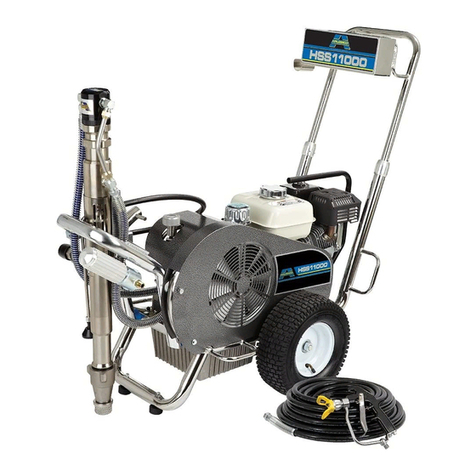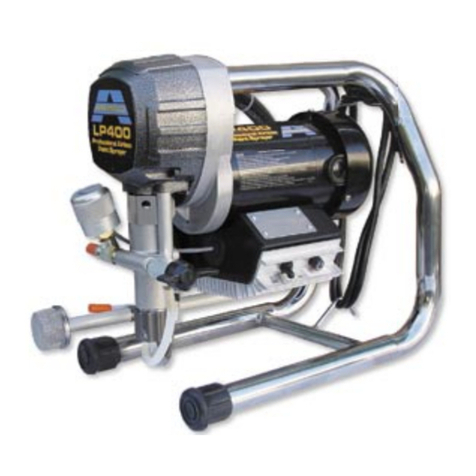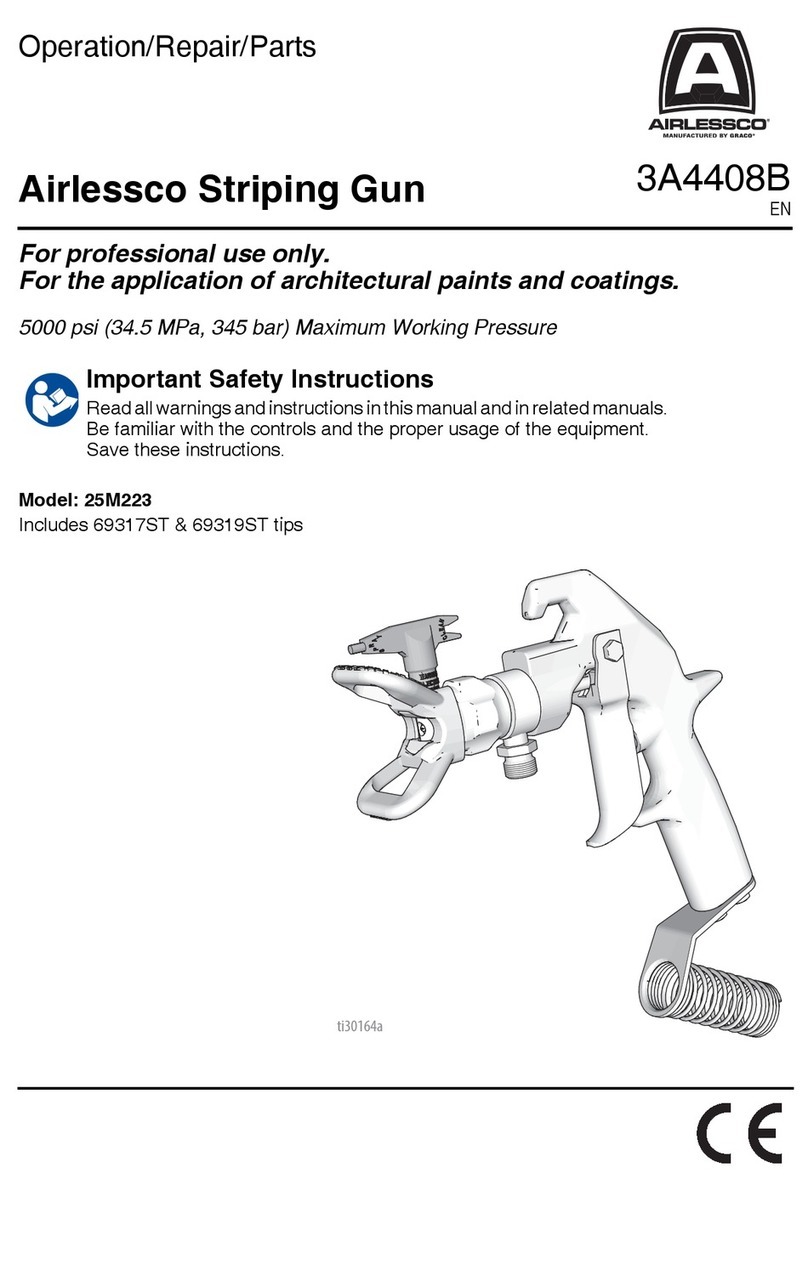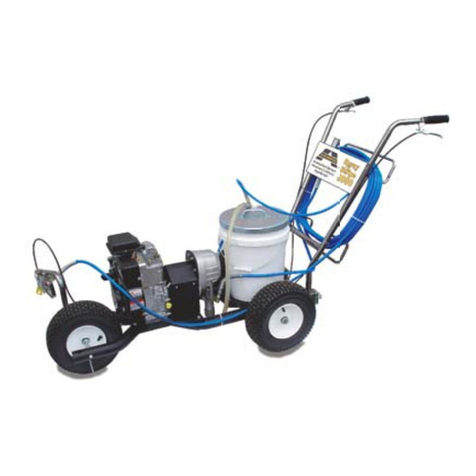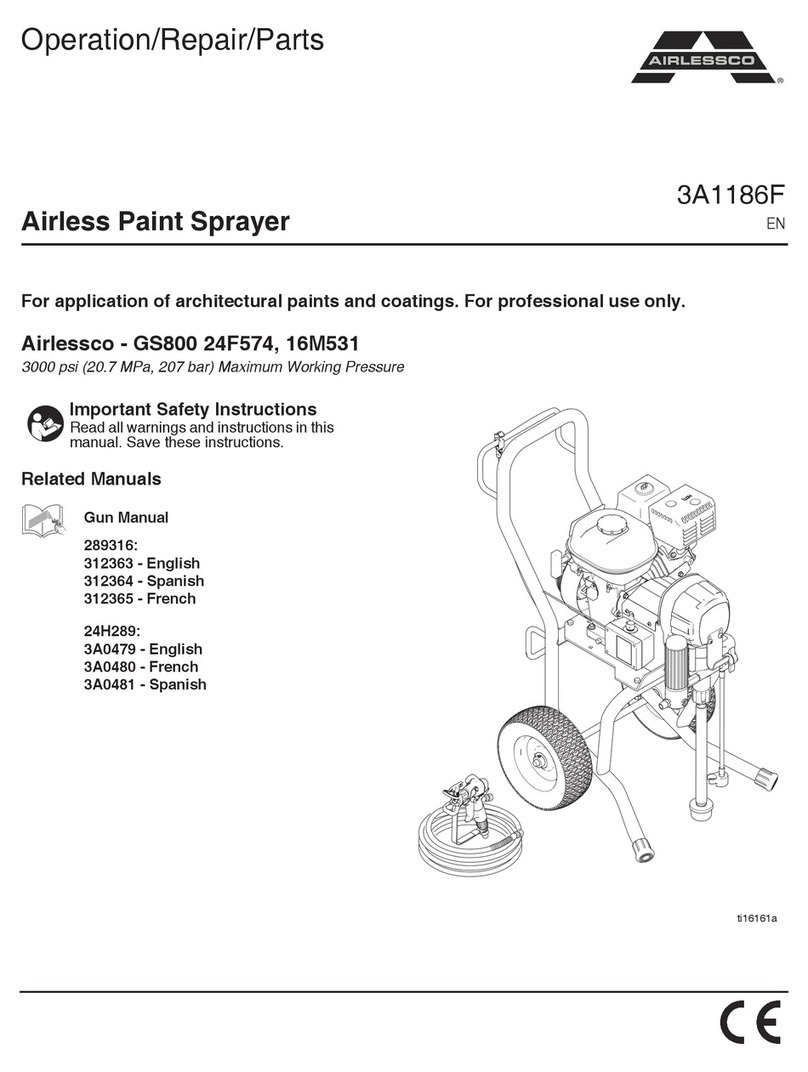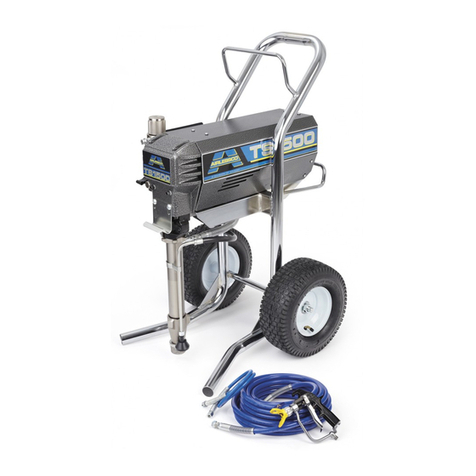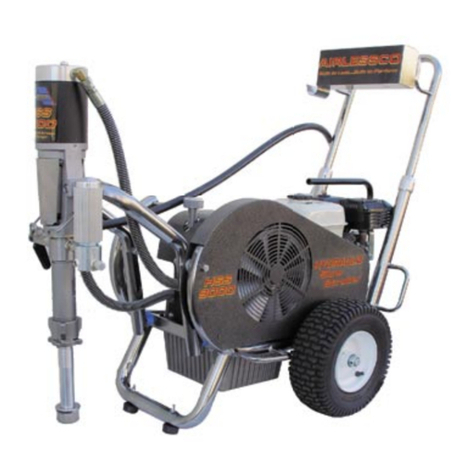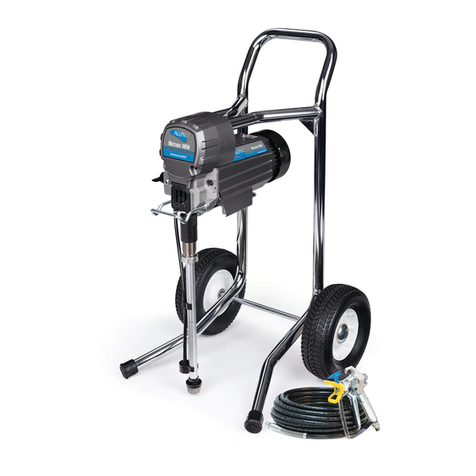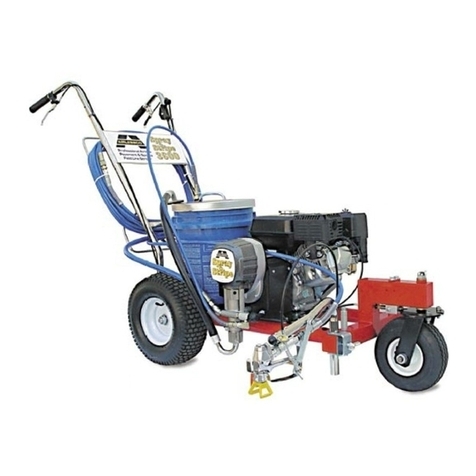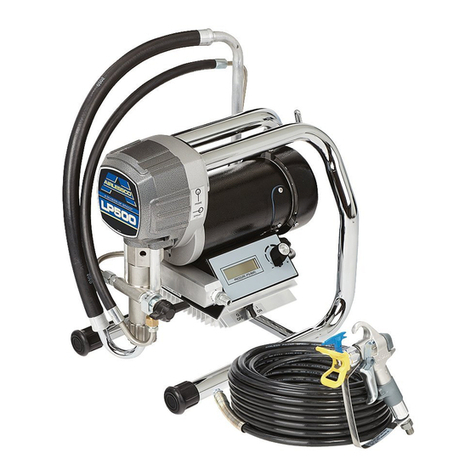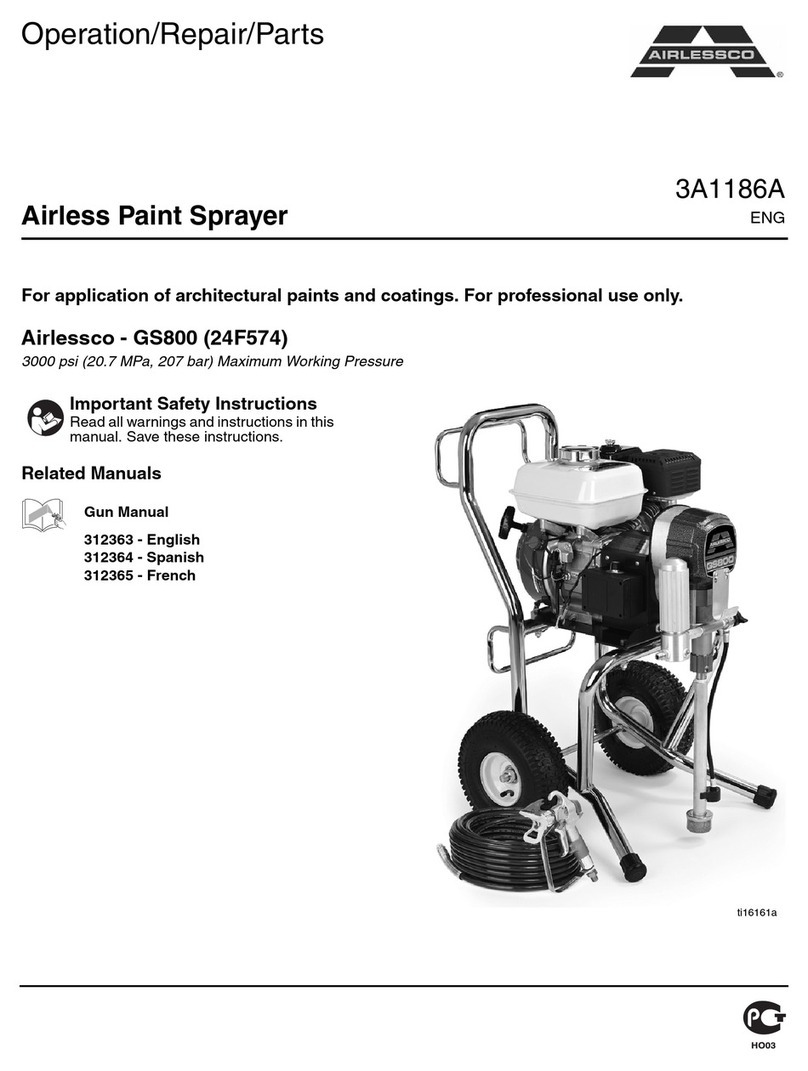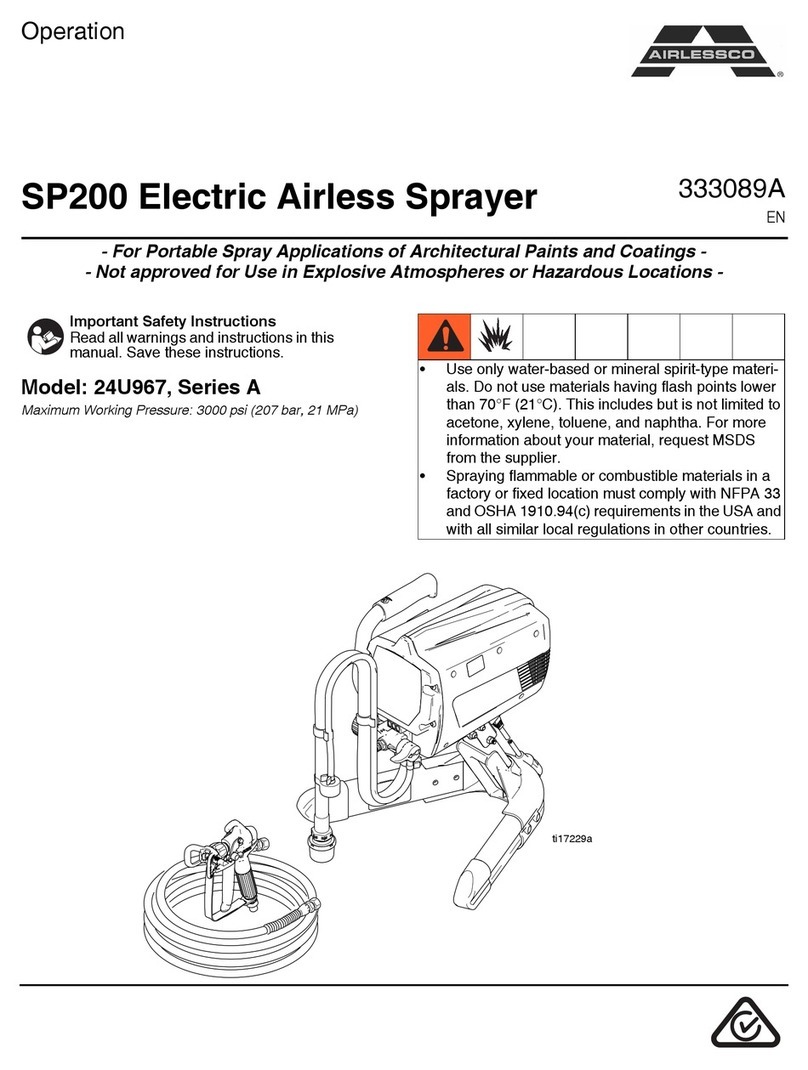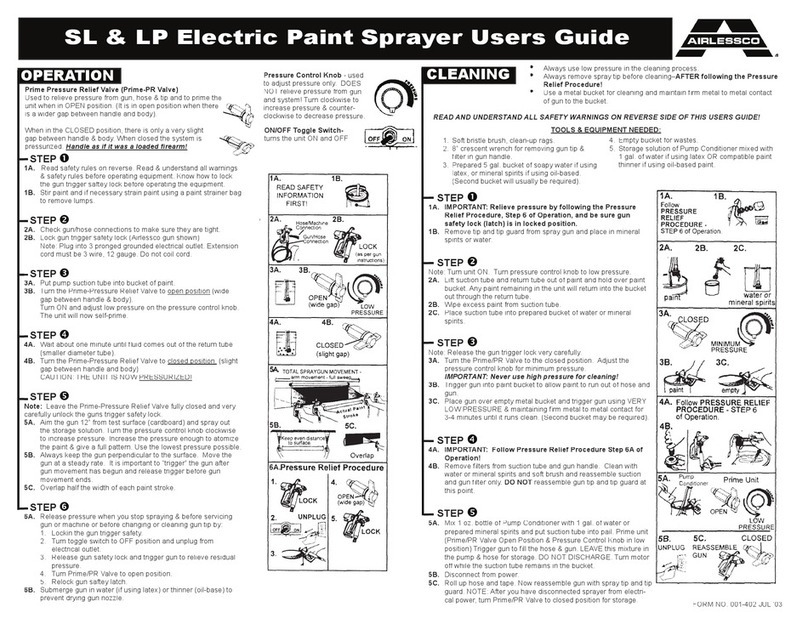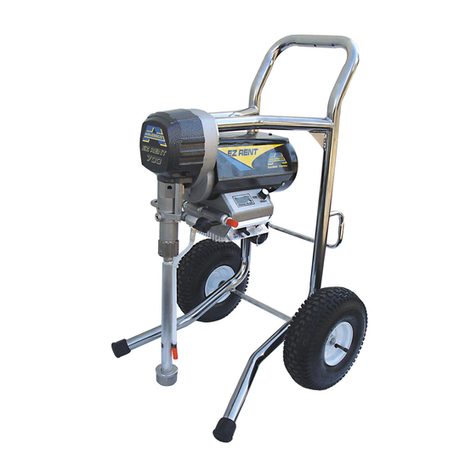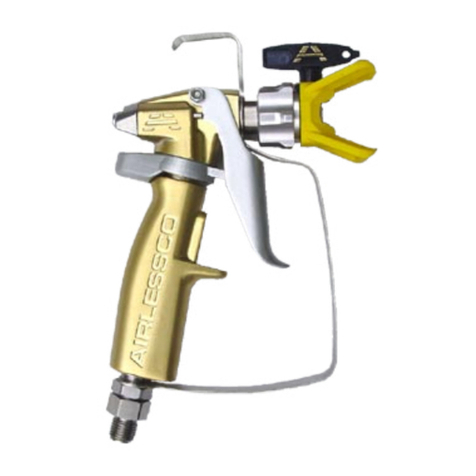
QUICK REFERENCE & SAFETY WARNINGS
INJECTION HAZARD
Fluid under high pressure from spray or leaks can
penetrate the skin & cause serious injury & the need for
amputation.
NEVER point the spray gun at anyone or any part of the body.
NEVER put hand or ngers over the spray tip. Do not use a
rag over your ngers, paint would penetrate through and
onto ngers.
NEVER try to stop leaks with your hand or body.
NEVER wipe off build up around spray tip.
ALWAYS remove the tip from the gun to clean it. After
following Pressure Relief Procedure!!
NEVER operate spray gun under pressure without spray tip.
NEVER try to “blow back” paint - this is not an air spray gun.
MEDICAL TREATMENT
If any uid appears to penetrate your skin, get EMERGENCY
CARE AT ONCE. DO NOT TREAT AS A SIMPLE CUT. Tell
doctor what uid was injected & have him call for treatment
instructions at NATIONAL POISON CENTER NETWORK
(412) 681-6669.
SPRAY GUN SAFETY
ALWAYS SET SAFETY LOCK ON THE GUN IN
LOCKED POSITION WHEN NOT IN USE AND BEFORE
SERVICING & CLEANING.
DO NOT remove or modify any part of the gun.
Check operation of gun safety devices before each use.
TIP GUARD
NEVER operate gun without tip guard attached.
NEVER modify or alter tip guard.
NEVER use Airlessco tip guard on other attachments.
Airlessco’s tip guard is designed for use with standard spray
tips only. When using other than standard spray tips, consult
manufacturer of such attachment for recommended tip guard &
safety instructions.
SPRAY GUN SAFETY
NEVER work on gun when connected to hose.
Be very careful when removing hose or spray tip from gun.
A plugged line contains uid under pressure. If tip or line is
plugged, follow the Pressure Relief Procedure for the pump
you’re using.
SPRAY TIP SAFETY
Use extreme caution when cleaning or changing spray tips. If
spray tip clogs while spraying, engage the gun safety latch and
ALWAYS follow “PRESSURE RELIEF PROCEDURE” before
removing spray tip to clean it.
CLEANING
Refer to pump manufacturer’s recommendation for cleaning the
system. Release pressure from pump and hose, remove spray tip
and ush with lowest possible pressure.
GENERAL PRECAUTIONS
NEVER alter equipment in any manner.
NEVER use around children.
NEVER allow another person to use sprayer.
ALWAYS use face mask while spraying.
NEVER leave sprayer unattended with pressure in system.
FIRE EXPLOSION WARNING
SPRAYING VAPORS + STATIC SPARKING = FIRE/EXPLOSION
PREVENT FIRE AND EXPLOSION BY REDUCING STATIC SPARKING AND
ELIMINATING VAPORS BY FOLLOWING THESE WARNINGS
ALWAYS be sure all equipment, paint bucket and object being
sprayed are properly grounded. ALWAYS ground sprayer, gun,
paint bucket and object being sprayed. Be sure gun is grounded
through hose connection.
NEVER spray in closed area. Ventilation must be adequate to
remove vapors.
NEVER keep ammable materials in spray area.
NEVER spray highly ammable liquids.
ALWAYS use only high pressure conductive airless hoses with
static wire approved for 3000 psi. Never exceed 500 feet of hose.
NEVER SMOKE IN SPRAYING AREA.
ALWAYS ensure properly maintained re extinguishing
equipment is available.
NEVER spray in vicinity of open ame or other sources of
ignition such as water heaters and furnaces.
ALWAYS locate the sprayer and electrical outlets in use at
least 25 feet away from spray area in well ventilated area.
Do not plug in any electrical cords in spray area.
Follow the coating and solvent manufacture’s safety precautions
and warnings.
HALOGENATED HYDROCARBON WARNING:
NEVER use halogenated hydrocarbon (HHC) solvents or paints
that contain them in this system. Some of the most common of
these solvents are: Carbontetrachloride, Chlorobenzene,
Dichloroethane, Dichloroethyl Ether, Ethyl bromide,
Ethylchloride, Tetrachloethane.
FLUSHING AND CLEANING CAN CREATE STATIC SPARKING IF DONE IMPROPERLY!
NEVER spray solvents under pressure through spray tip.
Follow Pressure Relief Procedure and remove
spray tip for cleaning.
Use LOWEST POSSIBLE PRESSURE when
ushing and cleaning.
Hold gun rmly against a metal waste container to reduce spark
possibility.
NEVER use cleaning solvents with ash points below 140
degrees F. Some of these are: acetone, benzene, ether, gasoline,
naphtha. Consult your supplier to be sure.
9
Cut along line and keep handy for Quick Reference
#
#
NEVER OPERATE GUN WITHOUT TIP GUARD ATTACHED


